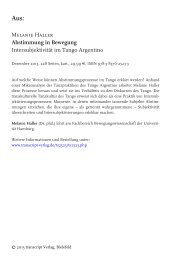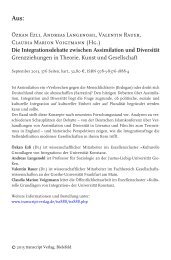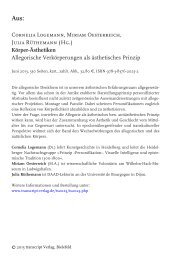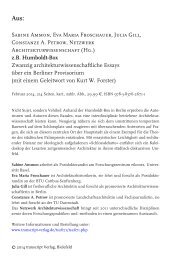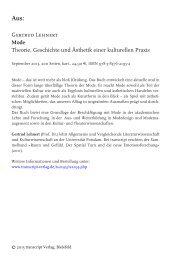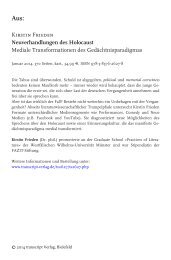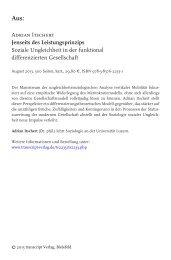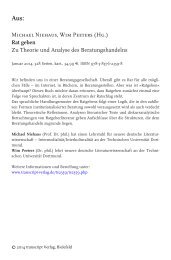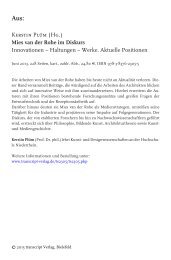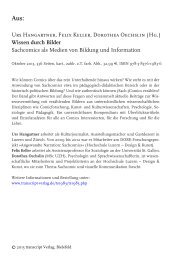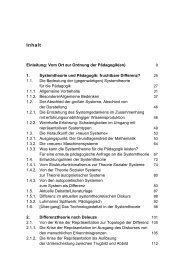Rainer Geissler, Horst Pöttker (eds.) Media ... - transcript Verlag
Rainer Geissler, Horst Pöttker (eds.) Media ... - transcript Verlag
Rainer Geissler, Horst Pöttker (eds.) Media ... - transcript Verlag
Create successful ePaper yourself
Turn your PDF publications into a flip-book with our unique Google optimized e-Paper software.
<strong>Horst</strong> <strong>Pöttker</strong> | Successful Integration?<br />
practice today: If the history of the Poles in the Rhine-Ruhr area is to be<br />
thought of as a case of successful integration, principles and practices might be<br />
found in both the mainstream and ethnic press of the time that might be<br />
worth emulating today. But if that history proves to be an example of an<br />
unsuccessful integration process, we should focus on structures and practices<br />
that journalism and the media should avoid if they are to encourage and<br />
further the integration process.<br />
Within a tradition stemming from Émile Durkheim’s influential work<br />
(Durkheim 1977, 306-316), social integration forms the basic concept for our<br />
understanding of integration: It is a desired social process that links the<br />
segments of a society (individuals, institutions, groups) by means of their<br />
particular awareness to a united societal whole, in which both similarities and<br />
unity on the one hand, and differences and conflict, on the other, are of<br />
importance. It can readily be seen that this definition, not concerned with<br />
cultural differences among the various parts of the societal whole, differs<br />
fundamentally from the concept of assimilation, which asserts cultural<br />
homogeneity as a precondition for societal unity. This difference becomes<br />
even more evident with the concept of intercultural media integration. For here,<br />
the intensity and content involved in communication between the different<br />
cultural segments of a society, the knowledge – as a result of this<br />
communication – which different societal sectors have of each other,<br />
participation in societal institutions, and the acceptance of basic cultural values<br />
serve as indicators of successful integration (Geißler/<strong>Pöttker</strong> 2005, 41).<br />
This definition is not only in contrast to the concept of assimilation, but<br />
also to ideas that with regard to migrants and ethnic minorities are not<br />
concerned with the issue of societal unity, but, instead, focus on (individual or<br />
cultural) identity. As the concept of intercultural media integration consciously<br />
focuses not on homogeneity, but on mutual knowledge and communication<br />
about differences, high priority is assigned to discovering what makes society<br />
possible without questioning the identity of the individual or group. Behind<br />
this idea is the premise that societal structures which destroy the identities of<br />
individuals or groups cannot themselves persist for a long period of time.<br />
Within the scope of the approach described in this article, research<br />
methods are closely related to the specific research issues. Section 2 is designed<br />
to determine the degree of success in the integration of the Ruhr Poles. Thus,<br />
data, documents, and literature are subject to analysis here. The two following<br />
sections (3 and 4) deal with reports in the German local press and in the Polish<br />
ethnic press (in the selective translation by the monitoring German authorities)<br />
and summarize the tentative findings of our ongoing quantitative and<br />
qualitative analysis of the specific historical newspapers. Finally, the last section<br />
contains an interpretation of these findings and applies a perspective of<br />
10



